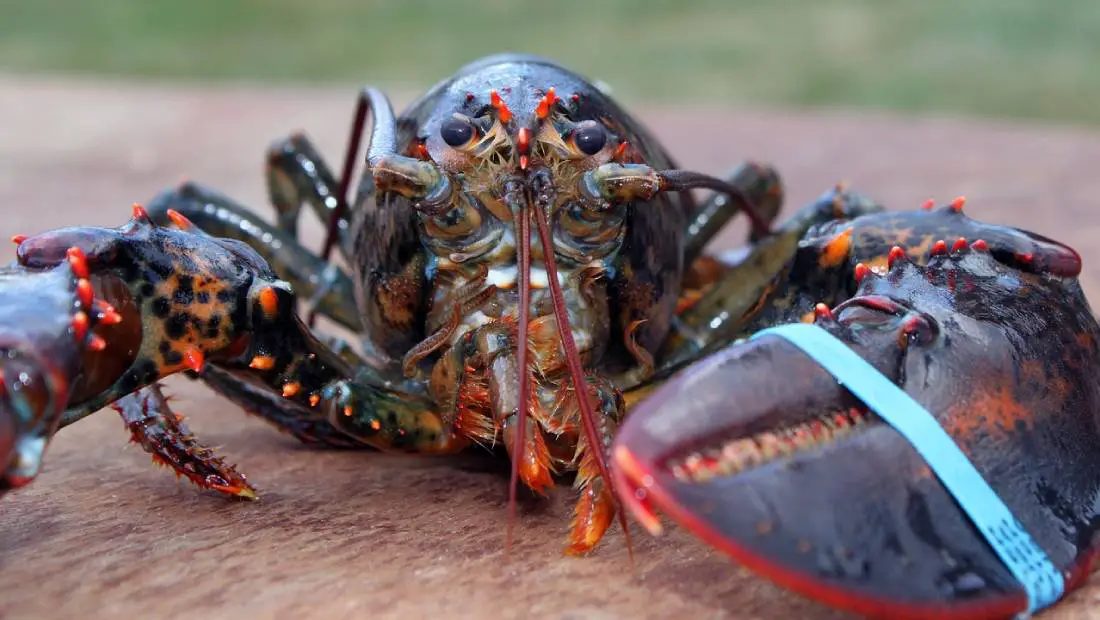Drawing a Parallel
Human beings, among other vertebrates, are known to be gifted with the art of communicating with one another, be it verbal, written or nonverbal cues.
This particular trait of ours makes us superior, as compared to the rest of the animal kingdom. However, Scientists and Researchers have stumbled across a new and rather unique way of communication in lobsters
Urination As a Means of Communication
Unlike human beings, who have developed a complex set of neural functions in order to communicate with each other, the mighty crustaceans of the ocean have an uncommon and straightforward way of expressing themselves, that is by urinating on each other.
Yes, you heard it right, Lobsters communicate with each other by urinating in the direction of other lobsters. Though this method might seem bizarre to us humans, it is relatively an easy way to relay emotions in the lobster world.
But Why Urination?
Some of you might question, Why do lobsters need to urinate in order to talk to each other? The answer to this is simple, these crustaceans have a very faint sense of sight and hearing, and they cannot produce sound.
Hence, urinating might be the only option for them to convey their feelings. Lobsters possess particular urinary bladders on either side of their head, which ejects urine from a duct under their eyes.
Once urine has been ejected, the other lobsters absorb the chemicals and translate them to unveil the information. Expressing your emotions of love by urinating on your partner is a grotesque concept for us humans, contrary to lobsters, it is a prosaic approach for them.
Finding The Right Partner
The mighty roaches of the deep communicate for mainly two reasons, The first being mating and the second is to assert dominance in male lobsters.
In order to elevate their social status and maintain a hierarchy in the clique, male lobsters regularly pick violent fights with each other to determine their status.
Female lobsters choose their mating partners by judging the smell of their urine and can accept or reject potential partners on the basis of the criteria set by them.
A Friendlier Approach
However, lobsters do not depend on urination as the sole method of communication, as it can malfunction sometimes and disrupt communication channels.
Alternately, lobsters release a certain chemical known as pheromones. While in the mating season, when a female lobster is ready to mate, they release pheromones into the deep waters, to alert the dominant males and initiate a battle for victory.
Being Mozart
Lobsters are not endowed with neural capacities or vocal cords to produce sound, but they do make music by rubbing their antennas at a speed to produce a horrifying screech sound that can be heard for up to 3 kilometres underwater.
Scientists speculate that lobsters produce this composition to repel predators around them. They also have millions of tiny hair all-around their exoskeleton, enabling them to sense and detect the subtle changes in temperature, movement and threat in their surroundings making them extremely sensitive to their environment.
A Few Interesting Facts
Lobster’s Diet
They mainly feed on clams, small fishes and crabs, but when food is scarce, they resort to cannibalism, by feeding on smaller lobsters. In desperate conditions, lobsters can also consume their own shells while shedding. Their shells are a rich source of calcium which allows them to regenerate faster, while also retaining metabolic energy.
A Kidney For a Head?
Lobsters have a fairly odd anatomy, with their brain located in their throat, nervous system in the abdomen, teeth in the stomach and kidneys in their head.
Nevertheless, they are considered to be a popular delicacy, but how did we develop the palate to consume these crustaceans of the sea? Let us take a look at the history behind the consumption of lobsters.
Road to being the “Seafood Royalty”
When European settlers initially landed on the coasts of North America, lobsters would collect on the shore in huge quantities. Their shells were used as baits for fishermen and the extracted calcium was used as fertilizers for crops.
Since lobsters were found in abundance, they were popularly known as “poor man’s chicken” and fed to prisoners and slaves during American Colonisation.
As railway lines began to advance in America, Lobsters could be transported from the coasts to the mainland with ease. Significantly, more and more people began consuming lobsters and developed a taste for their meat.
Hence, during the 1880s, lobsters became a heavily sought after dish in New York. By the time World War II commenced, the lobster meat was packed in cans and began to travel around the world, and awarding it with the title of “seafood royalty” .
Summing it up
Lobsters are just one of the many unique and rare creatures of the deep ocean having one of a kind characteristics, but they are not the only ones.
With decades of steady evolution, lobsters have successfully incorporated urination, which mainly is a method to flush out toxins from the body, as a means of communication.
The world underwater has always enticed and piqued our curiosity of exploration and discovery. Scientists and marine researchers have delved into the deep, leading expeditions to uncover the secrets of the abyss.
Marine creatures, like human beings, have a mind of their own which seems quite enigmatic to us. It is proven that creatures such as lobsters of briny deep have stories to tell which leaves us in a state of complete admiration.
Marine biologists have constantly made an effort to unearth the mysteries of the deep waters. With only 5% of the ocean been discovered yet, who knows what is in store for us.

